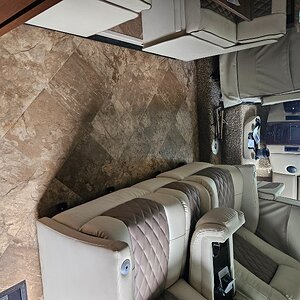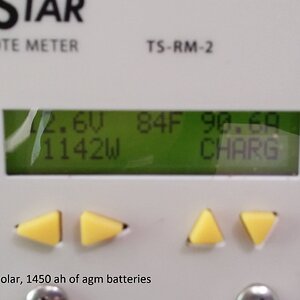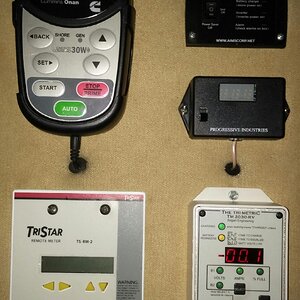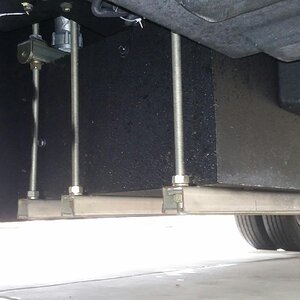Neal
Administrator
- Joined
- Jul 27, 2019
- Messages
- 13,871
- Location
- Midlothian, VA
- RV Year
- 2017
- RV Make
- Newmar
- RV Model
- Ventana 4037
- RV Length
- 40' 10"
- Chassis
- Freightliner XCR
- Engine
- Cummins 400 HP
- TOW/TOAD
- 2017 Chevy Colorado
- Fulltimer
- No
Well, I'm sure glad I opted for the heating pads for my 4 x Victron 330ah smart lithium batteries. And I'm sure glad I went all victron so the system monitors all it should be monitoring as LiFePO4 batteries can't be just dropped into a battery bay and hope for the best. This morning I had an alert from VRM, Victron's remote management portal, about a voltage alarm, can't remember the details but I didn't know how to handle it so I sent an email to SES Tech Support who has been helping me learn this new fancy setup ever since I left as there have been some peculiarities I've needed to understand. SES got in and updated some firmware but sadly changed something that shutdown 12V power so we lost remote connectivity (turned BMS from ON to Standby) and the Smart Battery Protect went into protect mode. All's good, I drove up to storage and turned the BMS back ON via Bluetooth. But while there I saw the issue in the app that made the initial alarm alert send out which is one of the four batteries saw a temp at or below 41F so it alarmed it shutdown charging. I thought the limit was 32F for charging but Victron pads that and if you go below 41F it voids the warranty. Well, it was 19F here last night so it makes sense why the batteries got cold. Not really an issue, it just means they stop charging until it warms up but if your temps aren't going to be above 41F (or get your battery back above 41F) it will discharge over time based on demands. Not a big deal as I'm on shore power but the alarm got our attention and didn't know why as VRM doesn't show battery stats (yet).
So moral is, YES, you need a heat source unless you are always in a place that is above your min temps. I was on the fence in spending the additional $$$ for heating pads but glad I did. Now the problem is the basement vent fans are on automatic control and the heat pads on manual control so they will remain ON. When I am back near SES, if I can't rewire this myself, I'm going to reverse that setup so the basement vent fans are on manual switch control and the heat pads are automated.
This again is why I decided to do it right. The system is properly managing the params of the entire system including batteries and keeping everything in proper limits for functionality. If you don't have these proper elements in place you could find yourself doing things out of limits such as trying to charge LiFePO4 when easily outside the temp range allowed.
I'm not even on my typical frozen tundra RV tour but sitting in storage in Virginia! And I need heat for LiFePO4's! Glad I have it!
So moral is, YES, you need a heat source unless you are always in a place that is above your min temps. I was on the fence in spending the additional $$$ for heating pads but glad I did. Now the problem is the basement vent fans are on automatic control and the heat pads on manual control so they will remain ON. When I am back near SES, if I can't rewire this myself, I'm going to reverse that setup so the basement vent fans are on manual switch control and the heat pads are automated.
This again is why I decided to do it right. The system is properly managing the params of the entire system including batteries and keeping everything in proper limits for functionality. If you don't have these proper elements in place you could find yourself doing things out of limits such as trying to charge LiFePO4 when easily outside the temp range allowed.
I'm not even on my typical frozen tundra RV tour but sitting in storage in Virginia! And I need heat for LiFePO4's! Glad I have it!












